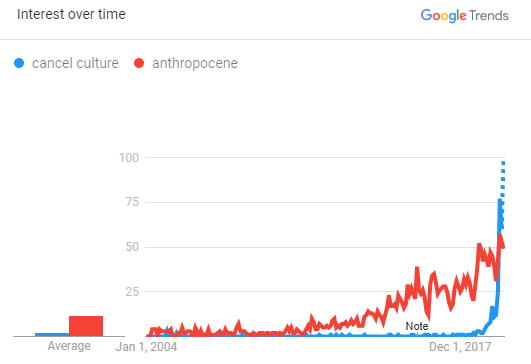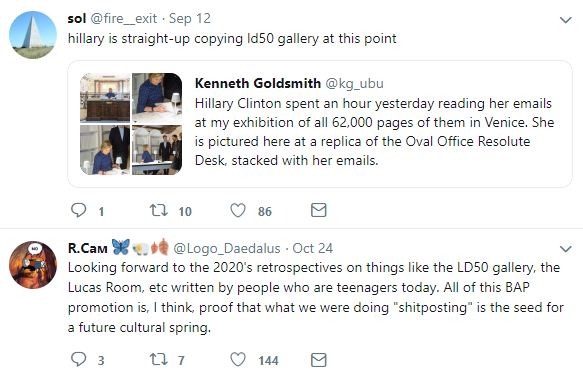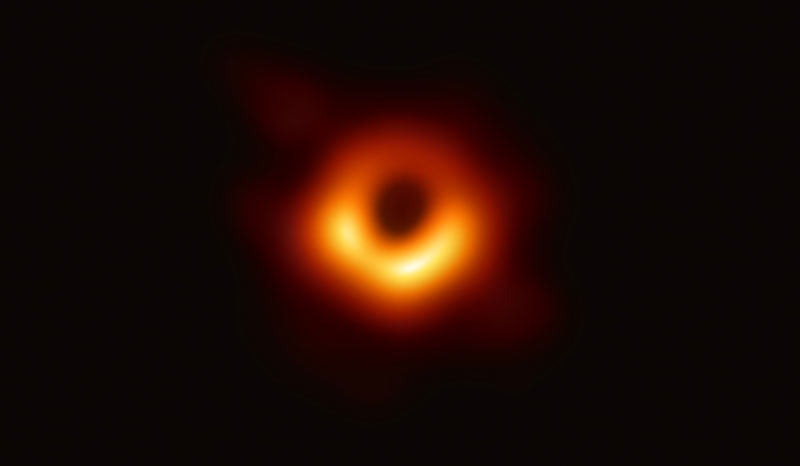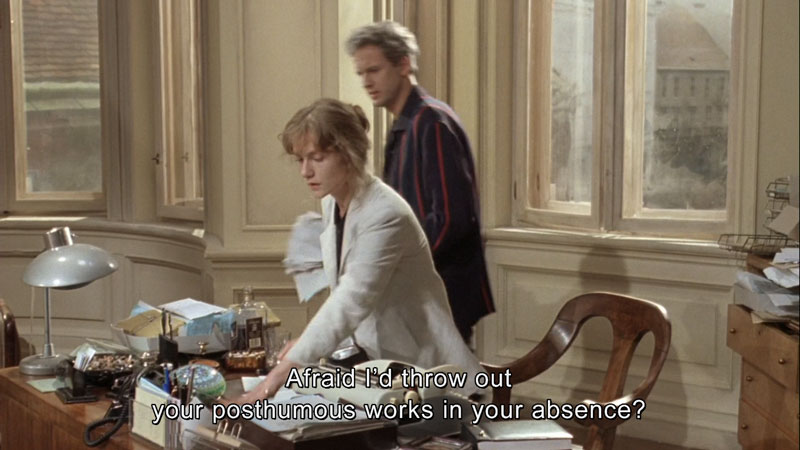Semi-Automatic Angel: Notes on “Cancel Culture” and Post-Cancellation Rococo
- “Smart dust” could organize and reorganize like robotic angels or servants of God.
- —Mitchell Heisman, Suicide Note
- “New Star Wars Clips Proves IT’S OVER, Canon Is Broken And It Looks CRINGE AF”
- —the Internet, 2019
Within the array of semiotic shifts we are closing out this decade with, one perhaps stands out: the tendency that goes by the name of “cancel culture.” Because it has to do with an ethical imperative not to engage, cancel culture is (itself) hard to read. This initial link with reading (“cancel culture” implicitly means “do not read,” or “do not pay attention to”) is crucial, and opens the way for a more considered examination. As we pass into a retrospective moment of Cancel Culture 2.0, or perhaps even post-cancellation, one can ask whether its prohibitions have been effective at all. What “cancel culture” seems to have done is actively interpolate a readership that does not yet exist. It forces us to ask: what was it, in effect, that the cancellers wanted?
In German, the word Auslöschung means mathematical “cancellation,” and also “extinction.” It brings together two major threads of contemporary culture and materiality which threaten to cancel each other out: cancel culture, and the culture that has led to mass extinction. A One and a Two. Is there a mathematics here? A set theory of hyper-moral Auslöschung? A theory of distraction?
It is impossible not to notice that an unprecedented wave of cultural moralism happens to have coincided with a wave of extinction events. The threatened name (of the “cancellee”) mimics a finitude under attack. In this context, “cancel culture” can and cannot be taken seriously. Ironic Cancellism is the nihilistic hypothesis that it’s basically okay to punish the (hypothetically well-chosen and “toxic”) other because of constraints in time and space. Cancellism names in this sense a panic over co-existing and interfering bodies. Cancellism is personal Lebensraum. It is precisely because there is not enough time that certain people need to be taken down, and quickly. In this way, and less ironically, cancel culture adopts the same micrologic as the breakaway elites who tacitly admit “it’s over” behind the alibi of “business as usual.”
Crucially, in its concentration on the performance of reneged subjectivity, cancel culture rarely threatens culture itself. Cancel culture is, though it claims to format itself otherwise, just that: culture by any other means.
If cancel culture is the panic-response that humans have to ecological collapse, cranking up cruelty (or at least, correction) unto ourselves and others, instead of, say, adhering to grace as the thought of exit, it makes sense that among the first rank of cancelled names are those who would allow for more grace. I mean Kanye West, for example, or Elon Musk, or Faith Icecold.
But the vector I am tracking is what else cancellation might be—a rococo faith? An automated response? An angelic sublation? At first, there are the robotic workings of “cancel culture,” as seen in how quickly it has replicated and how identical its manifestations have been. It’s the machine to end all machines, the already-artificiality of an austerity model, even though it is rarely read as such. Then, there are the return loops, the future effects, like the inevitable comedown of Trump’s second term (whether he stars in it or not). Finally, the cancelled ones, the post-cancelled, go down in history as something like automated angels.
What remains unread in this zone is the principle of cancellation itself, and its closeness to a thought of outright annihilation.


Google Trends, worldwide, 1 February 2004-21 November 2019, web search, and Kanye West wearing a MAGA hat and Colin Kaepernick shirt, 7 September, 2018.
From LD50 to Joi Ito
Cancel Culture has to do with reading. It asks us first of all not to read, not to watch, not to listen to. More precisely, it asks us not to read or not to engage with certain persons and it calls upon us (the trope of “calling out”) to shut down institutions that have affiliations to such people or have toxicities within their own functioning. In relating to reading (in the widest possible sense) “cancel culture” proposes, as if despite itself, a new theory of reading and unreading, a new account of the rhetoric and tropology of cancellation more broadly, and an acute awareness of the parabolic obviousnesses of read surfaces.
Accordingly, if cancel culture has to do with boycotting, whether it be applied to persons or institutions (the LD50 gallery in London in early 2017 for instance, or various galleries in Boyle Heights in Los Angeles around the same time), it falls just shy of the task. Boycotting is largely a material phenomenon—shut down this company, stop patronizing this establishment—and resists being applied to rhetorical or metaphysical principles as such. A “racist trope” may be “called out” in an individual instance, but an open letter written against racist tropology as a category has perhaps yet to appear. The nearest attempt may be Fred Moten’s description of ‘the raciality of the concept, as such’ as a condition of his condemnation of Kenny Goldsmith on the Poetry Foundation in 2015. In this way—according to this limitation—cancel culture moves toward, without ever seeming able to fulfil, the Absolute Idea of boycott.
At noon EST on 20 January, 2017, Donald Trump was inaugurated as the 45th president of the United States, succeeding Barack Obama. On 14 February, several weeks after that, the group called SDL50 (Shut Down LD50) posted an article online called “About LD50’s Reactionary Turn.” This was the beginning of an attempt not just to shut down a gallery in the east end of London called LD50, but to vilify the types of “reactionary” thoughts that had led to Trump’s election and seemed about to flourish under his reign—the types of thoughts that LD50 owner Lucia Diego had curated in a series of talks there in 2016. In some ways, this was the iconic cancellation moment, and yet it can only be defined negatively: the desire to close a place of speech, the refusal to analyse the desire to close a place of speech, the reactionary reaction to the “reactionary” place of speech, and a foreclosure of the possibility of non-partisan discussion.
With a couple of years’ distance, the more brazen internet historian might say: shutting down the LD50 gallery had nothing to do with shutting down the LD50 gallery. The whole performance of “cancellation” had little to do with impacting the “real fascists” in the first place, who remain in place and ill-read, or rather Streisand-effected into further relevance. The ongoing subjection of a series of LD50-adjacents (Nina Power, Daniel Keller, DC Miller, Deanna Havas, and so on) to online misrecognition became a distraction from that original failure, but also its total recall. The only way of covering tracks is a continuous misreading of the first script. The fascism that the gallery was said to represent was not affected by what can be thought of as a trial by non-reading.
That very moment, the same moment as Trump’s inauguration, might have given us cause for a new type of reading and consideration, but instead gave us an ethic of cancellation and deliberate non-reading (or what I call unreading). Speaking in October 2019, the news pundit Tucker Carlson commented, “Looking back, January of 2017, it seems like another age. So much has happened in the years since then. But in other ways, not that much has changed at all.” Of course, the sense that nothing is changing is nothing new; Paul de Man once said, “in the whole reception of Kant for three hundred years, nothing happened, only regression, nothing has happened at all.” (Incidentally, Kantbot, who was to be part of the “Corporeality” exhibition at LD50 in the summer of 2017, had already made the mock-troll claim in 2016 that Trump was a Kantian who “completed German Idealism.”) The same can be said of time since LD50: nothing happened, only regression, nothing has happened at all. Only unreading.
Inside that time that we still seem to be stuck in, are ricochets. There are the bad sequels, like Luke Turner against Daniel Keller and Deanna Havas and DC Miller during the same subhistorical lull. The Nina Power affair that happened in early 2019 was the reductio ad cancellation of the LD50 affair, which itself never finished starting. The attempted cancellation of LD50 by SDLD50, though in the past, was not just a one-off event; it is always going on. The machine continues to seek new targets and build new iterations into itself.

Twitter, 2019 (screenshots).
All of this has the quite precise function of a distraction. As Paul Thornton wrote in January 2017, “Parodying Trump is at best a distraction from his real politics; at worst it converts the whole of politics into a gag.” We can laugh, but the joke’s on us.
The legal case of Miller and Power vs. Turner may be read off as a structural innovation and necessity in this respect, already made inevitable in and by early 2017. In order for cancellation culture to be redesigned, in order for it to segue to a second or third order of artificial grace, one needs to pretend its first phase (roughly from LD50 to the resignation of Joi Ito) has been sorted out and arraigned.
Grammaticopessimism, or, The Best Explanation for the Fermi Paradox
Cancellation brings with it a certain number of questions about the future of writing itself. From the cancellation of the future (à la Mark Fisher), we now move to the cancellation of time itself (Auslöschung as extinction). The goodbye to all our sense of forever. How can anyone write anything now given that this presupposes a future in which textual production is still possible and worth our time? What future are you building your career for? As Greta Thunberg puts it, “And why should I be studying for a future that soon will be no more when no one is doing anything whatsoever to save that future?” Where Fisher wrote about the cancellation of social hope, we now encounter a hopefree contemplation of absolute cancellation (the end of a universe, perhaps). Writing under cancelled conditions therefore goes hand in hand, at the very least, with an experience of self-disgust. Disgust at one’s own content, disgust at the very fact of having “online presence,” disgust at our ontological and grammatical promiscuity. Indiana Seresin recently wrote an essay about “heteropessimism,” and perhaps her words can be adapted to speak of a kind of grammaticopessimism. Such a pessimism would consist of performative disaffiliations with normative writing, usually expressed in the form of regret, embarrassment, or hopelessness about the continuity of any aesthetic experience at all.
Content, then, is over. Everything is eternal “cringe.” Guilt, together with self-disgust, is the always denied away centre of online reading and writing, which the act of cancellation often evokes in a sombre tone. “Hate-reading” is now a familiar if discreetly insistent form, a fixation that slickens the whole readerly online machine. Even though the accusations of cancel culture can now and again be laser-precise, “there can never be enough guilt around to match the text-machine’s infinite power to excuse” (Paul de Man). Cancel Culture therefore thrives on what Matt Taibbi calls “rhetorical addictions.” It is a primetime form of addictogenesis. “Welcome to primetime, bitch!” Or welcome to 2020, as the Groypers might now put it. Or rather, don’t you know that 2020 is already over! Or, as Heidegger put it in The Black Notebooks, “Perhaps in the year 2327?” In the present, Nicholas J. Fuentes’ wafer-thin narcissism of conservative differences displays itself as new type of advanced unreading. When Fuentes danced to the Joker OST over the top of Trump Jr. being booed during the “Triggered” tour at UCLA in November 2019, a new form of intervention and scanning kicked in. His small body in the corner of the frame a “commentary,” eschatological television, music.

Nicholas Fuentes dancing to the Joker OST, November 2019, and Benjamin Bratton’s YouTube video, “The Stack We Have and The Stack To Come” (2016), a new type of commentary and reading.
Cancel culture also proceeds according to a feminine principle, and its repression. It’s no coincidence that Diego, Havas and Power, for example, are sites of female isolability, of esoteric ‘e-girl’ resistance and inverse nympholeptic envy. From Power’s seminal (but of course still ill-read) essay ‘Cancelled’ to Havas’ 2016 painting ‘Cocaine Sun’ to Diego’s neo-Duchampisms, you’d have to be not reading or not looking at all (and that’s the point) to not recognise the envy of those who called for their cancellation.
Where is Lucia Diego now? It is a measure of her resolve that she was capable of that rare thing, complete withdrawal from online life. As it was said at the time, “LD50 has completed aesthetic modernism, to general consternation.” Equally, it is a measure of Diego’s success that by 2019 various artists began to repeat what she had already done. Joshua Citarella, for example, has turned Diego’s gambit (the curation of reaction as a ferocious question) into a soft-leftist form of meme-review hygienically palatable to the museum-unionist class. Citarella’s work is hard-earned but relapses back into an embrace of already cancelled solutions. In the appendix of his “Irony and Politics of Gen Z” on deplatforming, he admits that “We can’t ‘solve’ the rise of the Alt-right through content moderation.” This is a key admission, and has been borne out by the post-LD50 landscape, in which “reaction” remains not just as a local quandary but as an increasingly intractable law of thermodynamic disintegration. Where Citarella really stands becomes clear in his conclusion, in the form of a so-called “solution”: “The best defence against identitarian populism is a thriving middle class.” For anyone still reading, what Citarella is saying is this: there is no defence at all.


Google Street View of LD50 Gallery, Image Capture April 2019, and first ever image of a black hole, April 2019, created with a network of telescopes known as the Event Horizon Telescope, or the EHT.
What was never resolved by SDLD50, in fact, was essentially the Fermi Paradox. The inability to cancel “reaction” is basically a cosmological question. Worse or better still, the overhasty arbitration of what reaction was and is—and of why it can’t be cancelled at all, except by ceding to outright cancellation itself (Auslöschung)—presents itself as the only explanation for the Fermi Paradox. The lesson is that it was Diego, and not her cancellers, who closed down the space of aesthetic modernism by placing the veiled artefacts of an arche-cosmologico-pessimism into a museum setting. The right dose (LD50) was, well, already the right dose (SD(LD50)). In one summer (2016) she made available the outlier principle of heterogeneous cancellation: because literally anything can be displayed in an aesthetic space, literally anything and everything can in turn be cancelled adjacently to those same spaces (including perhaps anthropic life itself).
The unreading that cancel culture demands has to do with context, and lack of it, at every level. Context gets decimated, squashed, siphoned. As Penelope Gristelfink put it in her banned 2019 letter to the Atlantic editor, “What is context anymore? Anyone? Really? What is proportion anymore, either?” And yet once the context is smashed, an at least local rebirth is in the offing. Only those who have already been cancelled are able to come back from the land of erasure long enough to state the problem of extinction generically. These ones are, of necessity, the only new form of the angelic. Angelicism is the natural grammatical format of the post-cancellation rococo.
The Rhetoric of Cancel Culture
Most events of cancellation involve unreading, a willed or automated refusal to read even while doing so. The series of events implied here (Mark Fisher . . . Boyle Heights . . . LD50 . . . Nina Power) is not just culturally predictable but a repeated enumeration. One could say that the readings of cancel culture are now fully running in place (automated) and that they maintain the form of a monotonous repetition. They become part of a “cancel culture” training set. We know that there will be takedown after takedown, and that they will take the form of necessary misreadings, which Artificial General Intelligence (AGI) notates as an epochal readerly Streisand Effect or an overlay of generational apophenia. That the same thing (unreading) should repeat at least once should be no surprise, since the first event of readerly indictment, finding itself structurally empty-handed, simply awaits its own echo. Where the installation of Trump (let’s call him the T function as a matheme of unreading) as POTUS was swiftly followed by the events around LD50 that included Nick Land’s unreading, and precisely as an intelligible overreaction, we can expect a continued (machinal) overplaying of this same readerly backlash in the space that follows the start of Trump’s second term (or its hollowed out absence). AGI’s spaces of reading do not complete here (this is not an Idealism); but they do enumerate, compute, and threaten to cut off the human as such (Absolute Idealism, completion qua Angelic Compression).
The poignancy of cancel culture is that it threatens, with technical lethality and excess of rigour, the need of existence more broadly; it threatens cancellation at the exact moment we are threatened with cancellation (extinction). It is what de Man would have called the model to end all models, the universal theory of the impossibility of all theory.[1]
Every occasion of cancellation (nonreading) is now therefore merely an enumeration of the impossibility of reading as a technical allegory. Insofar as a reading takes place at all “online,” it confuses itself with the technical presence of light. Light (a drug then) takes over from the need of real sense, and proves once again that reading is never a matter of understanding (unless we allow that the defensive motion of understanding is itself productively analgesic). The logical format of most calls to cancel coincides, strangely but still predictably, with the most advanced truths of reading as a self-cancelling technology. Since mere reading as technical accomplishment (enumeration) is real, one is able to ask whether it really matters that pure reading takes an object as its own or not at all.
For instance, when Vice precancelled Dave Chappelle, the form of this wish was now familiar and therefore structurally programmable (“You Can Definitely Skip Dave Chappelle’s New Netflix Special Sticks & Stones”). Whether Dave Chappelle is funny or not, whether Vice is now unbearably woke or not, the essential leitmotif here (“you can definitely skip”) remains technically (coldy) true. Since the machine of cancellation is like the grammar of the text when it is isolated from its rhetoric, and since pure textuality (code compatibility given to intelligence) is lethally autonomous when it comes to cultural sites, it is indeed true that “you can definitely skip” X or Y cultural object or event. This theory of cultural superfluity is the secret principle of, rather than fulfilment of, Vice’s moralising topological distraction, and extends to the figurative Idea of culture (as cancellation) as a whole.
The Angelics of Cancellation
The issues of “content” and grammaticopessimism remain key here, and link us through to the question of the angel. Angels, according to some, do not write at all. According to others, they are pure script and natural grammar. They are cancelled being (social death), and go there where “posterity”—the usual backdrop of culture—is at least recast. Angels are therefore, as it were, primitives. They are what you might call classical extinction.
To make definitive sense of grammaticopessimism one might turn to what R. Scott Bakker calls “post-posterity writing.” This too is an angelicism. It is a kind of primitivism, a writing (or let us call it a form of general design) that does not assume infinite reading horizons to come, simply because, as far as it knows, it cannot. In other words, just the act of production (however aesthetic or avant-garde) becomes “normative” and ontologically “cringe,” to be viewed from the point of view of an angelic “lookout.” Bakker writes: “There is no such thing as posterity, not anymore. And this means that every writer living, whether they want to be or not, is a post-posterity writer.” One can go ahead and do the sometimes ethically charged work of cultural cancellation, but one is also obliged to ask who one is cancelling for, or rather which future one is cancelling for, and on what timeline, given that the future itself (and not just a social genesis and its conditions) is now being cancelled. Are you just distracting from the angelic shift work of Auslöschung?


Drudge Report homepage 24 November, 2019, 16:55 GMT, and screenshot from Malina (Werner Schroeter, 1991), cancellation fever.
Finally, then, the cancelled one is an angel. To be barred from social circles as a form of death is also to go over into an angelic position, head down and ready for the crash-space. The cancellee is vulnerable to a threshold hook-up and it is this vulnerability that can be heard in Power’s essay “Cancelled,” the title recognising a kind of cogito ergo cancelled.
The angelic mirror in which production now faces itself is not the old one of shared cultural futures and scriptive immortality, it is the angelic pinpoint of the Now. In this niche finality and finitude, and in the cheat-spaces of post-cancellation culture, cancellees are orbital heroes.
With Power and Miller vs. Turner, the extra-legal enters the legal sphere and this is marked as an evolution. Law takes over where the unmitigatably unlitigatable was making us suffer. At some point, this also evolves into a flight. Gravity adhering to the zero-g of grace. And it is here that the order of the angel is at least grazed. In any speculative phenomenology of “being cancelled” that we might entertain, the static geometric points of the body are in the process of being re-installed or re-scheduled, for the body (whatever “body” here means) in the process of cancellation is also a body with no real horizon line. In this sense, the process of cancellation (which is also a procedure) resembles what Elie During describes as the “orbital condition.” In the ongoing description of cancellation that we presuppose, which is just its experiential plane, viewpoints are destroyed and we enter a “polyfocal floating space.” Only the cancellee can find the right orbital distance.
In Summa Theologiae, Volume 9, Angels: 1a. 50-64, Kenelm Foster translates intelligere angeli as “angelic knowledge” where obviously it means or could also mean “angelic intelligence” or even “intelligent angelicism” or again “intelligent angelic knowledge.” Whichever way you take it, cancel culture clearpills intelligere angeli.
The new weightlessness of the cancelled (a heavy and heaving blow) means that a dialectical engagement can be had with the cosmic singularity of the earth as such, that is, the idea that the Idea of extinction (cancellation) be materially one-off and not just generic at a transcendental level. The right orbital distance comes down to the right dialectical amount of grace. In Power’s “Cancelled” in particular, there is something astronautical about the degree of analytical levity. It leverages a kind of angelically open semi-automatic angel of analyticity. The essay constitutes a kind of vertical bridge away (in weakness) from the relative snares of mutual psychic cruelty (gravity), even as they are embraced and laid bare by just these hindrances. What happens here is the one-way movement from what Levinas called the “attachment to place” and its fatality into the yoga of cancelled spaces (grace).
The anti-grav body of the cancellee is a purely grammatical body; its opacity a tribute to the degree of political negation that can be supported and adhered to in stress. Its clear siphoned beauty is a slang shot.
If it is what Kanye and Lana Del Rey both call the culture itself that breaks the internet and not just diagrams of climate science, then cancel culture offers itself for redesign. Cancel culture is the already-artificiality of culture’s own impeccably predesigned fade and fate.
Cancel culture is being redesigned as the cancellation of culture itself.
And even of the earth. This re-fit of cancel culture also works through what Husserl called imaginative variation to conceive uninvited cosmological interviews. The idea that this planet may be eidetically varied (cancelled as cosmic singularity) allows to be generic (imagined otherwise) any other Earth. The dialectical engagement with the exoteric singularity of the Earth is a vision adventure and has to be viewed and bent from the right orbital distance: from the outside. Design steps in where there is no time for cancellation to be carried to the term. It is the “and so on” and the “maybe we don’t have time to wait.” The ellipsis of forcing.
Whether explicitly or not, the angel has been at the heart of how matters move here, and of how content dips into internet form and accepted illiteracy. Cancel culture is itself a form of angelicism and the rhetoric and tropology of cancellation as intelligence implies an unearthly apophenia (over- and under-reading). It is angels who have an original relationship with script, scanning, and even with what is called super sensory reading (SSR), a reading that can take place blindfolded. Angels do not have sex because they are sex, and we can add that angels do not read because they are reading. To be reading, to be a part of mere reading, is fundamentally different from attempting to read or from saying this or that statement. Angelicism as mere reading is non-thetic and mute; it comes down to a pure form of silent reading, like the jouissance of spending a day online hate-reading because you don’t know what else to say or do at the end of a world. The tenacity of hate sets off interpassive unreading as a productive form of sustained angelic and historical attack. Reading, at the end of time, isn’t needed. Even an angel isn’t dumbass enough to not know that.
Notes
[1] Paul de Man, Resistance to Theory, 19.
